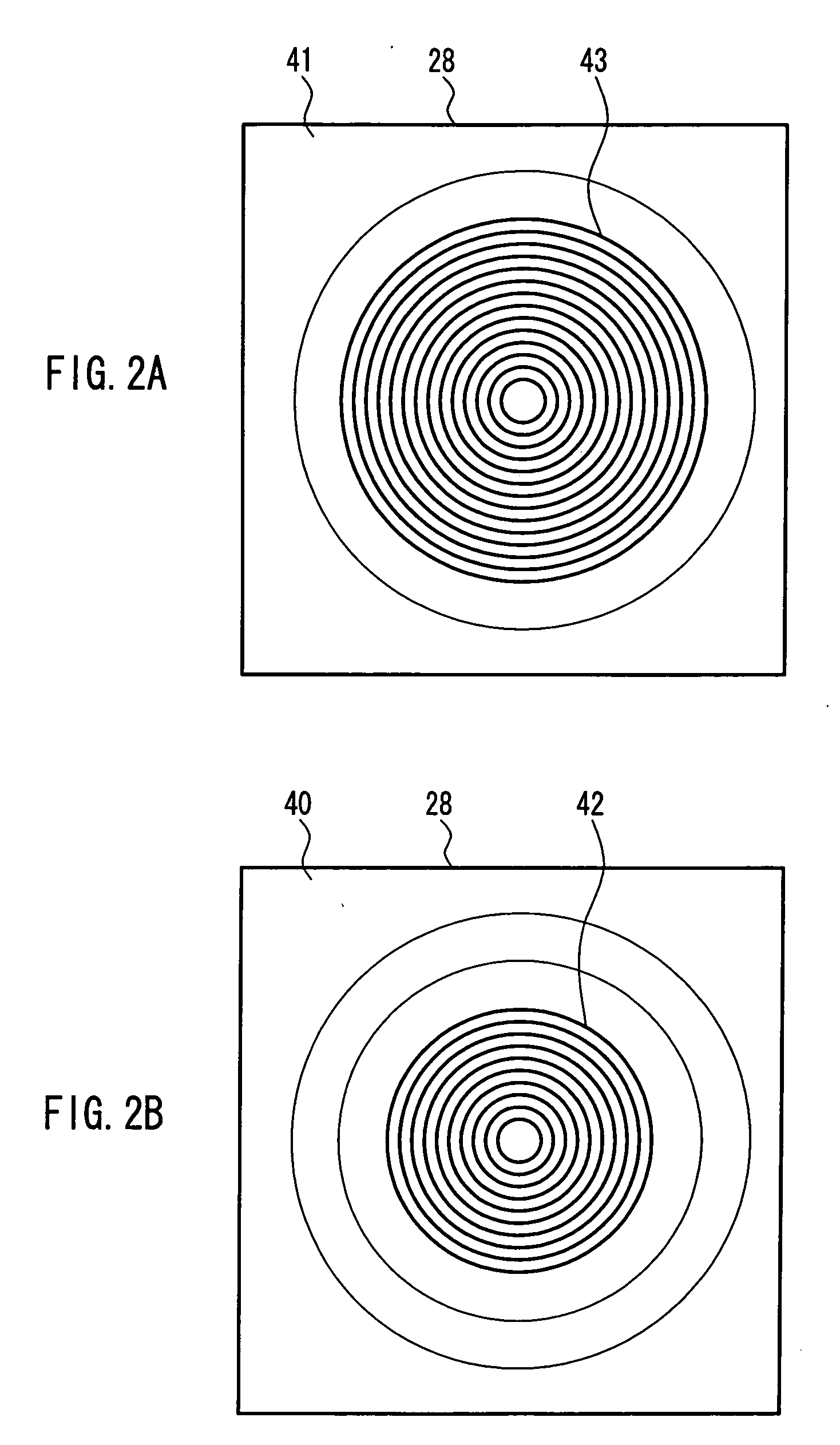Optical element, optical head, optical information recording/reproduction device, computer, video recording device, video reproduction device, server, and car navigation system
- Summary
- Abstract
- Description
- Claims
- Application Information
AI Technical Summary
Benefits of technology
Problems solved by technology
Method used
Image
Examples
first embodiment
[0484]FIG. 1 shows a structural view of an optical head 20 according to a first embodiment of the present invention. The optical head 20 is capable of at least either recording to or reproducing from (referred to below as “recording and reproduction”) an optical disk. FIG. 1A shows the recording and reproduction state of a high density optical disk whose substrate thickness is thin, FIG. 1B shows the recording and reproduction state of a DVD, and FIG. 1C shows the recording and reproduction state of a CD.
[0485] The optical head 20 is provided with three types of light source; a blue semiconductor laser 21 (light source of a first wavelength) of a wavelength of approximately 400 nm (380 nm to 420 nm), a red semiconductor laser 22 (light source of a second wavelength) of a wavelength of 630 nm to 680 nm, and an infrared semiconductor laser 23 (light source of a third wavelength) of a wavelength of 780 nm to 820 nm.
[0486] When recording and reproducing a high density optical disk 30 ...
second embodiment
[0552] An example of an optical head applied interchangeably to high density optical disks and DVDs is described as a second embodiment. FIG. 16 is a structural example of an optical head 80. As shown in FIG. 16A, a light of wavelength λ1 emitted from a blue semiconductor laser (a light source of a first wavelength) 21 passes through the wavelength selecting prism 24, and is converted to collimated light by the collimator lens 26. The light that was converted to collimated light is reflected by the beam splitter 27, passes through the dichroic hologram (optical element) 81, is focused by the objective lens (focusing means) 29 and is irradiated onto the high density optical disk (first information recording medium) 30.
[0553] The numerical aperture (NA) of the objective lens is 0.85, and the substrate thickness of the high density optical disk 30 is assumed to be 0.1 mm. The objective lens 29 is designed such that spherical aberration is at a minimum when the blue light of wavelength...
third embodiment
[0567] A third embodiment shows an example of a head that records and reproduces information onto three types of optical disks using three types of light sources using an optical element that has a dichroic hologram on one face and a phase shift step on an opposite face. Furthermore, a dichroic hologram that has two types of groove depths is described.
[0568]FIG. 20 is a structural overview of an optical head 90 according to the present embodiment. Parts that are the same as in the first and second embodiment are given the same symbols, and the description thereof is hereby omitted. The present embodiment differs from the first and second embodiments in the use of a dichroic hologram (optical element) 91, which has a phase shift step on its rear surface.
[0569] A front view of the dichroic hologram 91 is shown in FIG. 21, while FIG. 21A shows an upper surface (disk side), FIG. 21B shows a rear surface (side furthest from the disk), and FIG. 21C is a cross-sectional view of FIG. 21B....
PUM
 Login to View More
Login to View More Abstract
Description
Claims
Application Information
 Login to View More
Login to View More - R&D
- Intellectual Property
- Life Sciences
- Materials
- Tech Scout
- Unparalleled Data Quality
- Higher Quality Content
- 60% Fewer Hallucinations
Browse by: Latest US Patents, China's latest patents, Technical Efficacy Thesaurus, Application Domain, Technology Topic, Popular Technical Reports.
© 2025 PatSnap. All rights reserved.Legal|Privacy policy|Modern Slavery Act Transparency Statement|Sitemap|About US| Contact US: help@patsnap.com



